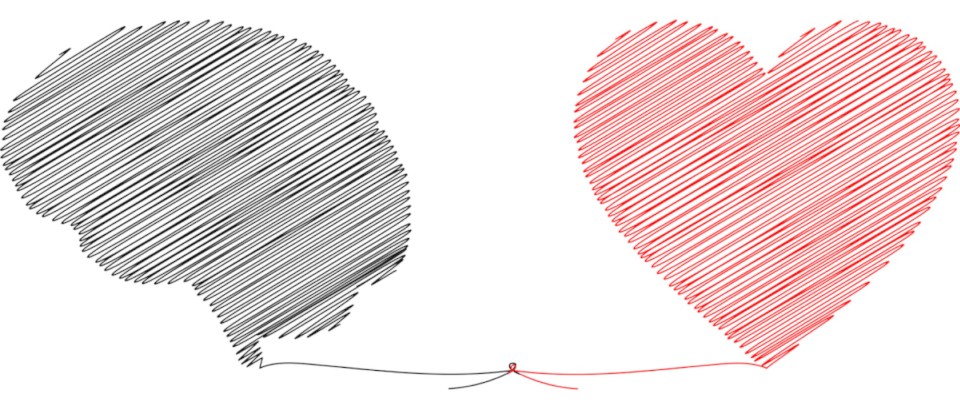The inspiration for this post comes from a recent conversation between Jordan Peterson, Steven Pinker, and Jonathan Haidt. During the first half hour of the video, they explore moralization as a source of violence justification. The more people frame an issue in terms—that is, impose a narrative—of good and evil, the greater the chance that they are willing to commit violence, all the way up to genocide, to see their side win.
This is the “God-shaped hole” that Jonathan Haidt speaks of: we are attracted to the idea of putting our life’s purpose in the service of a larger struggle in which we can clearly choose a side. We want to be oriented towards “the good” and, consequently, away from “the evil” aspects of the narrative structure. And this plays out whenever people have found a cause such that their actions express this polarity.
Maybe you have very strong feelings about saving the environment from evil capitalist interests? Maybe you feel that perpetrators of systemic racism and violent policing or rape in this country must be eliminated? Or maybe you feel that abortion is an immoral act, justifying extreme measures to prevent it. Ultimately, the feeling that someone is a “bad person” deserving punishment or elimination does not arise solely between groups. Moralizing a narrative into good and evil characters is a general tendency for humans.
From this initial thought, it is a bit of a stretch to get to the three titular elements. And it is possible that, as much as in my own mind the connections are relatively clear, I may not be able to convey them well enough. No reason not to try, though.
In “The Hidden Spring” Mark Solms explores consciousness (and life in general) as the ability of complex systems to minimize free energy. One way I interpret this pattern is that wherever potential energy is available, life—if it is successful at its function, that is—has a tendency to avoid the shortest route in which the potential is converted into other forms of energy. Put differently, the more skilled life is at retaining potential, at “spending it slowly”, the higher the complexity. The rate of energy conversion from potential into momentum is slowed to a crawl, and in exchange complexity flourishes.
I chose gravity as one of the easiest to understand forms of (physical) potential and the force of attraction. Every physical object we can touch—that has a quality of substance and mass—exerts a mutually attractive force on all other such objects. In the aggregate, this means that in our day to day life we “stick to the ground” as it were. And the distance between objects serves as the potential. Through the attractive force, pairs of objects are “naturally enticed” to gravitate towards one another, and as the distance decreases, their relative motion towards an attractor point increases.
The connection with the inspiration I took from the conversation between Peterson, Pinker, and Haidt? The “God-shaped hole” we have in our hearts and souls functions as one such attractor. It pulls us with enormous force towards a narrative that generates momentum. The danger? That’s where the second piece of the title comes in.
Fairly early in life, when I was probably about 12 years old or so, I discovered Chaos Theory and, with it, fractals. One common way in which a fractal geometry emerges is by repeatedly applying a simple rule, a force as it were, to a “coordinate” or state, beginning with a starting point. By categorizing the outcome, these intricate images emerge. For instance, one outcome would be that the state moves ever closer to an attractor point. Another outcome might be that the state deteriorates entirely (towards infinity). In both those cases, the story ends rather quickly.
The most interesting points are those that show neither behavior: as the state changes, it never converges to a specific location. In other words, the state dances between whatever attractors exist in the space, never leaving it, never falling into a trap. These states are the ones that belong to the intricate boundary between those that show relatively more predictable behavior.
And this, finally, brings me to conscious choice. It is a piece of quite old wisdom expressed by Aristotle: virtues are points that lie between extreme (attractor) states of being. And being single-mindedly focused on one quality alone also leaves the others under-developed. To me, this suggests that the most successful kind of choice is not the one that brings about the “winning of one side over the other”, a kind of final attractor, at which the game ends. Instead, the most moral conscious choices are those that allow the game to continue for as long as possible, bringing about complexity and awe-inspiring forms in the process.
Conscious choice of that kind requires slowing down and not letting one-self being consumed by one cause or attractor, no matter how compelling it might seem in filling the “God-shaped hole”. And that can be tough, since the feeling I experience whenever my motivational system latches onto such a cause can be electrifying. However, as I jump onto the proverbial bandwagon of a cause, I am losing sight of whatever it is that motivates and drives other people who are “not on board with the program.” And it is this blindness, a kind of unconscious ignorance and inability to see that contributes to how easy it is to justify using violent means to pursue what seems a just cause.
